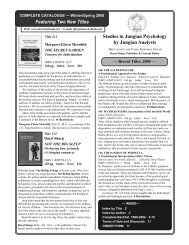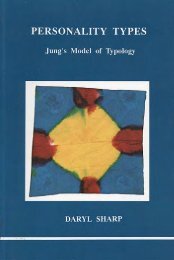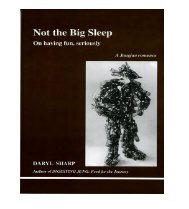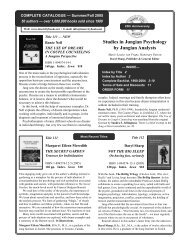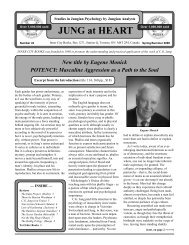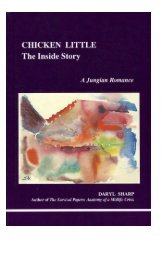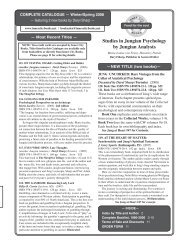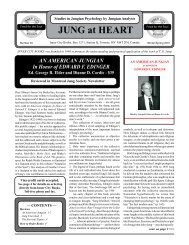Digesting Jung: Food for the Journey - Inner City Books
Digesting Jung: Food for the Journey - Inner City Books
Digesting Jung: Food for the Journey - Inner City Books
You also want an ePaper? Increase the reach of your titles
YUMPU automatically turns print PDFs into web optimized ePapers that Google loves.
3<br />
A Psychological Compass<br />
The four functions are somewhat like <strong>the</strong> four points of <strong>the</strong> compass;<br />
<strong>the</strong>y are just as arbitrary and just as indispensable. . . . But one<br />
thing I must confess: I would not <strong>for</strong> anything dispense with this<br />
compass on my psychological voyages of discovery. 10<br />
Why do we move through life <strong>the</strong> way we do? Why are we better at<br />
some activities than o<strong>the</strong>rs? Why do some of us prefer to be alone<br />
ra<strong>the</strong>r than with o<strong>the</strong>r people—or at a party instead of reading a<br />
book? Why don’t we all function in <strong>the</strong> same way?<br />
From earliest times, attempts have been made to categorize individual<br />
attitudes and behavior patterns in order to explain <strong>the</strong> differences<br />
between people. <strong>Jung</strong>’s model of typology is one of <strong>the</strong>m. It<br />
is <strong>the</strong> basis <strong>for</strong> modern “tests” such as <strong>the</strong> Myers-Briggs Type Indicator<br />
(MBTI), used by corporations and institutions in order to classify<br />
a person’s interests, attitudes and behavior patterns, and hence<br />
<strong>the</strong> type of work or education <strong>the</strong>y might be best suited <strong>for</strong>.<br />
<strong>Jung</strong> did not develop his model of psychological types <strong>for</strong> this<br />
purpose. Ra<strong>the</strong>r than label people as this or that type, he sought<br />
simply to explain <strong>the</strong> differences between <strong>the</strong> ways we function and<br />
interact with our surroundings in order to promote a better understanding<br />
of human psychology in general, and one’s own way of<br />
seeing <strong>the</strong> world in particular.<br />
After extensive years research, <strong>Jung</strong> identified eight typological<br />
groups: two personality attitudes—introversion and extraversion—<br />
and four functions—thinking, sensation, intuition and feeling, each<br />
of which may operate in an introverted or extraverted way.<br />
In <strong>Jung</strong>’s model, introversion and extraversion are psychological<br />
10 “A Psychological Theory of Types,” Psychological Types, CW 6, pars. 958f.<br />
16



